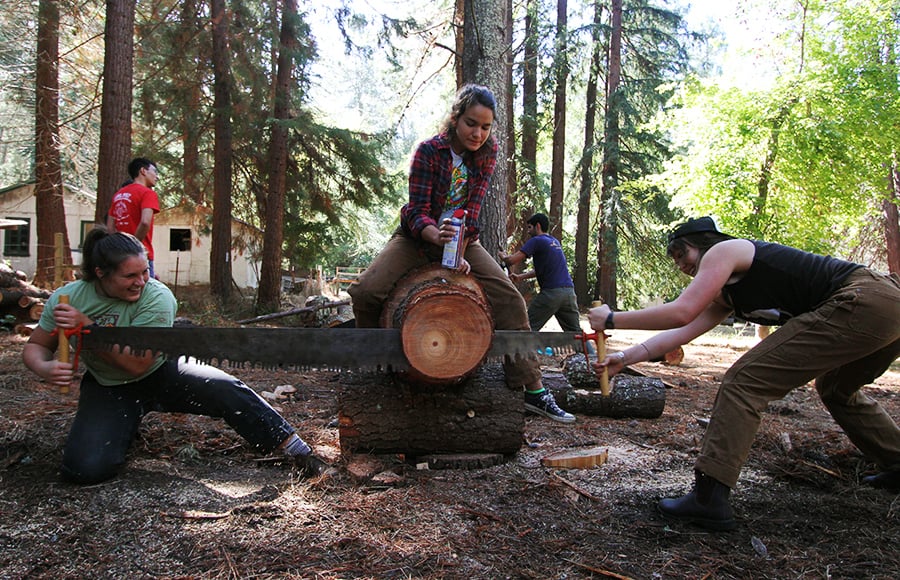
Our information network is full of surprises. I found this on Craig Rawlings’ Forest Business Network. Joe McBride, quoted in this article was one of my professors, lo these many years ago.
Here’s a quote:
Cal Logging Sports, a traditional sport for old-time male loggers, is just one part of UC Berkeley’s forestry and natural resources major. The program is one of only a handful in the state and the most female dominated by far.
“They have more resources and coaches and a lot more burly men,” said Gonen of other forestry programs, such as those at Humboldt State and Cal Poly. “But we have spirit, and we have a lot of fun.”
Berkeley’s forestry program has 32 majors that study the art and science of managing forested landscapes. More than two-thirds of the students are female.
“This isn’t a national trend. It’s something unique here at Berkeley,” said professor Kevin O’Hara, the advisor for the forestry club on campus. “Forestry has been a male-dominated field forever.”
Berkeley’s program, which has been around since 1914, reached an equal gender ratio in the 1980s. Only eight women had graduated from the program before 1965. It has since turned mostly female.
Despite the traditional image of a male lumberjack logging in the forest, the women of the program recognize the value of their trade. A quarter of California is forest, and there are more than 6 million acres in the Sierra Nevada alone that need restoration. After graduation, forestry students will likely work for the U.S. Forest Service or private industry, playing a vital role in managing and protecting the state’s increasingly threatened forested landscapes. Forests are the home to beloved national parks and are the heart and soul of many northern California counties whose primary industry is logging.
“If you want to build a house, you need us. If you want paper, you need us,” said Green, a forestry student. “If you want toilet paper, you need us. If you want your kids to see forests, you need us.”
I wonder how common this is across schools?
My sister, Cecily Lorena Wagner, was an graduate from the Cal’s School of Forestry and Conservation in the early 1970’s. She attended the summer camp of 1969, which also attracted quite a few characters including John Stuart of Humboldt State. She moved up to British Columbia to attend the University of British Columbia where she received the Masters in Forestry. She was a lively participant in any discussion of forestry and proved to be right more times than her brother.
She did some meaningful work and had an interesting career until her life was cut short by illness. I am sure she would be happy to know that her passion for forests is being embraced by so many young women in California. I know forestry will be richer for it!
They should be inspired with all the positions held by women in the Forest Service. Hopefully they are learning its not ok to burn up our old growth forests.
Females are 60% of all university undergrad degree recipients. 50% more women in school than men. Why wouldn’t they be the dominant gender in all fields?
There probably are a number of reasons, but the simple fact is, women are hardly the “dominant gender in all fields” that their higher overall representation in undergrad degrees might suggest. In science and engineering (S&E) fields, as a NSF study concludes, “Within S&E, men and women tend to study different fields. In 2009, men earned a majority of bachelor’s degrees awarded in engineering, computer sciences, and physics (82%, 82%, and 81%, respectively). Women earned half or more of the bachelor’s degrees in psychology (77%), agricultural sciences (51%), biological sciences (60%), chemistry (50%), and social sciences (54%).” Source: http://www.nsf.gov/statistics/seind12/c2/c2s2.htm. While forestry is admittedly neither a science (is it? not sure how it’s classified) nor an engineering field, there are obviously several more male-dominated areas of education, and forestry may be one of them (wildlife might be less so, I’m just guessing as I don’t know the stats).